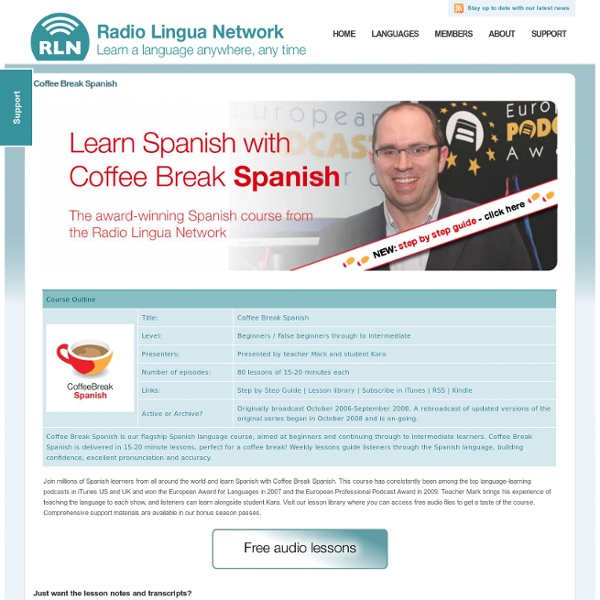Más arriba: Spanish Language Exercises
Más arriba (©2013 by Gary Aitken) is an interactive workbook of introductory Spanish language exercises, based on the pictorial contextualization of fundamental vocabulary and language points. The exercise material includes full-colour drawings, sound clips, instant feed-back, vocabulary help and a voice recorder (powered by Vocaroo). Más arriba can be used with any introductory approach. You can follow the alphabetical Exercise Index directly below or click here to go to the Lesson Index, provided for users of the Third Canadian Edition of ¡Arriba! Comunicación y cultura (©2013 by Pearson Education Canada). Click here to learn how to type accents in Spanish.
Spanish Language Blog: Language and Culture of the Spanish-Speaking World
Había una vez una bloguera que comenzó a escribir sobre cultura española y a compartir cosas que pensaba podían ser interesantes para gente aprendiendo su idioma. Así que escribió sobre su ciudad, sobre dichos y refranes, literatura, a veces sobre cocina, y por supuesto sobre las distintas festividades de su país. Uno de sus posts iba sobre la celebración de la Pascua en España, que como sabéis es una fiesta muy religiosa. Compartió algunas imágenes, una de ellas del típico penitente, y para su sorpresa y asombro recibió varios comentarios y mensajes preguntando sobre las vestimentas de los nazarenos, ¿podéis imaginar por qué? Porque algunos de sus lectores los habían tomado por miembros del Ku Klux Klan! Este es el motivo por el que hoy quiero hablaros del origen de parte de esa extraña vestimenta: el capirote. Por suerte hoy día ya no se quema a la gente en la hoguera, pero los penitentes aún mantienen esos ropajes como símbolo de aflicción y arrepentimiento. ¿Podréis…? Could you…?
Spanish Pronouns
A Pronoun in Spanish as well as in English is like a shortcut to refer to a noun, a word that stands for or represents a noun or noun phrase, a pronoun is identified only in the context of the sentence in which they are used. So you must have a prior idea about who "he or she" "él or ella" is. In English we find "me, her, what, that, his", In Spanish they're used pretty much the same way, the main difference is that in Spanish most pronouns have a gender, masculine or feminine and rarely neuter to unknown objects or ideas. Types of pronouns include personal pronouns (refer to the persons speaking, the persons spoken to, or the persons or things spoken about), indefinite pronouns, relative pronouns (connect parts of sentences) and reciprocal or reflexive pronouns (in which the object of a verb is being acted on by verb's subject). This table below shows examples of all pronouns categories in Spanish: Subject pronouns: Spanish Possessive Pronouns: Mine= el mío / la mía /los míos / las mías.
Learn Spanish with these Resources
To learn Arabic, you’re going need a way to learn correct pronunciation and the alphabet, a frequency dictionary to form your base vocabulary, and a good grammar book. You’ll also benefit from a thematic vocabulary book for specialized vocabulary and maybe a book or two, once you learn your first 1000 words. Make sure you read the Method sections of the website, then check out some of these recommended resources (pictures are links): Alphabet and Pronunciation Note: As a faster (and more effective) alternative to the following pronunciation resources, check out my Kickstarter project. First off, get a feel for how pronunciation works in English. There’s another extremely cheap and ridiculously well reviewed book about the Arabic alphabet that many learners have found really helpful – Awde and Samano’s The Arabic Alphabet. Your base vocabulary I’ve made a base vocabulary list of 625 words to start you off! Book-type book You can read anything that you enjoy. Other Resources Assimil



